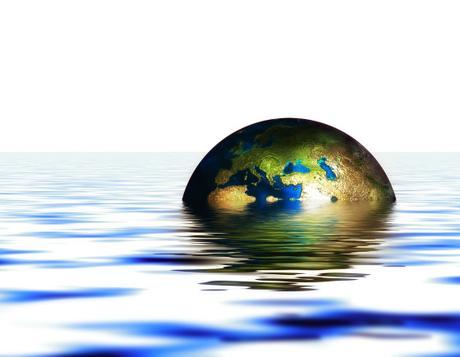
Photo: Pixabay
The future exists only in our imagination. A problem is that when we visualize the future it is easy to imagine that our Earth has not changed. We can visualize new technologies and innovations, and ways to interact and communicate with other people. A flying car or a mobile phone that tells us when we need to go to the doctor to check our blood-pressure. But imagining a different environment is hard – the forest and the plants that we visualize are still the same as the one we see when we look out of our windows.
Klaus Winter is a plant physiologist at the Smithsonian Tropical Research Institute and a couple of years ago he planted seedlings of 10 tropical tree species in small, geodesic greenhouses. He grew some of the seedlings in conditions that they were used to, around 26 degrees Celsius (79 degrees Fahrenheit), while some of they had daily average temperatures of 35 to 38 degrees Celsius (95-102 degrees Fahrenheit). These kinds of temperatures that may be reality by the end of this century due to climate change.
Take a moment and think about how you think the plants were coping with the hotter conditions. Perhaps you imagine:
- A dry desert
- Starving animals
- Dead seedlings
Well, to Klaus’s surprise the vast majority of the seedlings did not die. Most of them even thrived in the warmer conditions. The seedlings were growing faster and they were larger. Two of the species did not survive and they died when they were exposed to the hottest temperatures.
What happened may have been a surprise, nevertheless, if you study paleontological data you will find that warmer temperatures actually can boost the growth in tropical forests. It is important to note, that this result does not mean that we should stop our efforts to reduce the effects of climate change and although this effect may be positive there are other effects that can have a devastating effect on plants and animals as well as on humans. What it does show, is that it the world as we know it may evolve and develop into something different. A new beginning for some species and the extinction of others.
If we want to survive in this “new world” we have to be creative and start searching for ways to survive everything from storms and hurricanes to agriculture destroying droughts and loss of land due to rising sea-levels. We have to find ways to study how changes will affect different parts of the world and to predict what the loss of certain species means for the overall ecosystem. It may well be that some trees thrive in hotter climates but if the plants underneath the tree tops are dying it is going to change the growth.
There are several factors that need to be included and analyzed and these changes are also going to influence what kind of technologies we need. Environmental changes may enhance the need for protection against certain species that might thrive for example under ocean acidification. An acid sea might not be lifeless but it will be different. Some fish species may die and maybe we need to immediately start searching for new ways to feed the Earth’s population (this is in itself no news but it may change the focus from trying to produce more food in the oceans or shift the focus to farming different species that can live in acid water, or indeed search for ways to change the acidity in the water).
Ecosystems are changing and we need to start not only analyzing data to help us predict changes but also start to look for innovative ideas to help us survive in this in many ways new world.
